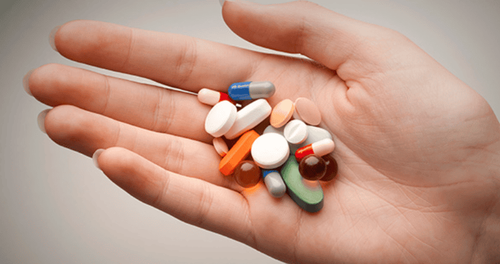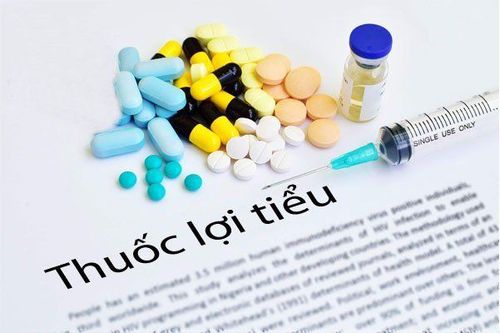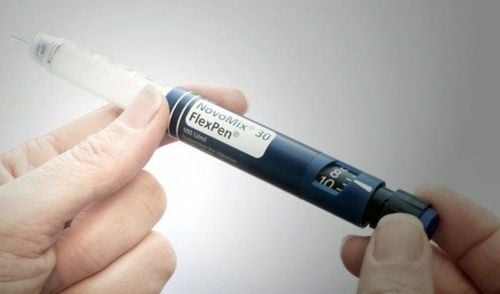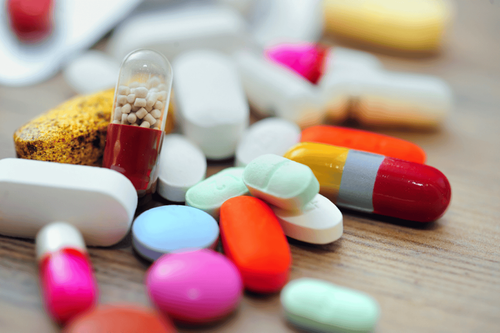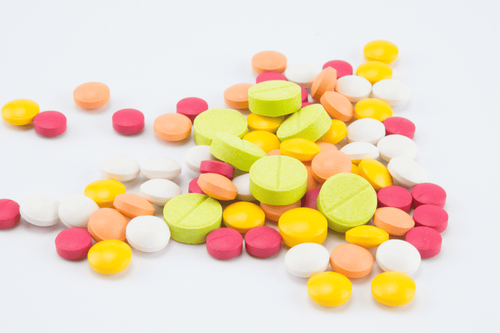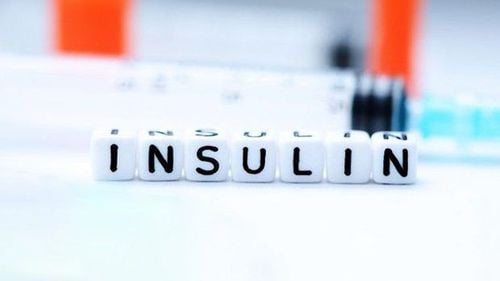This is an automatically translated article.
Drugs Agilosart 100, Agilosart 50 and Agilosart 25 mg are indicated for the treatment of hypertension and kidney disease in people with diabetes effectively. On the market today, there is a lot of information about Agilosart drug products, but it is still incomplete. To better understand what Agilosart 50 mg is, what are the uses of Agilosart, and what are the side effects of Agilosart, let's learn more about the following article.
1. What is Agilosart 100, Agilosart 50 and Agilosart 25 mg?
Agilosart 100 mg, Agilosart 50 mg and Agilosart 25 mg are drugs used in the treatment of high blood pressure and kidney disease in people with diabetes. Agilosart can be used alone or in combination with other antihypertensive agents.
Dosage form: Film coated tablets
1.1. The main ingredient of the drug Agilosart 100 mg What is the drug Agilosart 100 mg? Agilosart 100mg is a drug used in the treatment of high blood pressure and heart failure. Agilosart medicine 100mg is manufactured at the branch of Agimexpharm pharmaceutical joint stock company, has been tested and used in hospitals across the country.
Main active ingredient: Losartan
Active ingredient classification: blood pressure
Trade name: Agilosart 100mg
Dosage form: Tablet
Product packaging: Box of 10 blisters x 10 tablets
Main ingredients include: Losartan - 100mg . Excipients (Corn starch, Lactose, Polyvinyl pyrrolidone, Croscarmellose sodium, Microcrystallin cellulose, Magnesium stearate, Talc, Hydroxypropyl methylcellulose, Titanium dioxide, 0 red iron oxide, Polyethylene glycol 6000 and Polysorbate 80) for 1 tablet
1.2. The main ingredients of the drug Agilosart 50 mg What is the drug Agilosart 50 mg? Agimexpharm 50 mg is the antihypertensive drug of Agimexpharm. Agilosart 50 mg can be used alone or in combination with other antihypertensive agents (eg thiazide diuretics). Main ingredients include: Losartan potassium 50mg and Hydrochlorothiazide 12.5mg.
Agilosart 50mg is made in the form of film-coated tablets, the package includes a box of 3 blisters x 10 film-coated tablets.
1.3. The main ingredients of the drug Agilosart 25 mg What is the drug Agilosart 25 mg? Agilosart 25 mg is a prescription drug - ETC used in the treatment of hypertension. Main ingredients: Losartan potassium 25mg. Agilosart 25 is available as a film-coated tablet.
2. What are the uses of Agilosart?
2.1. Agilosart 50 and 25mg Treatment of hypertension: May be used alone or in combination with other antihypertensive agents (eg thiazide diuretics). Losartan should be used in patients who cannot tolerate angiotensin-converting enzyme (ACE) inhibitors.
Losartan is being tested in the treatment of heart failure. This is also the great advantage of angiotensin receptor antagonists, so they can also be used to treat heart failure like the indications for angiotensin-converting enzyme inhibitors.
2.2. Agilosart 100mg Treatment of hypertension in adults and children over 6 years: Can be used alone or in combination with other antihypertensive agents (eg thiazide diuretics). Losartan should be used in patients who cannot tolerate angiotensin-converting enzyme (ACE) inhibitors.
Treatment of kidney disease for patients with type 2 diabetes mellitus with hypertension with proteinuria ≥0.5g/day.
Reduced stroke risk for hypertensive patients with left ventricular hypertrophy.
3. The side effects of the drug Agilosart
When using Agilosart-H 100/25 you often experience undesirable effects (ADRs). Most side effects caused by losartan are mild and go away with time.
Common, ADR > 1/100 Cardiovascular: Hypotension and chest pain. Central nervous system: Insomnia, dizziness, fatigue.
Endocrine - metabolic: Increases blood potassium levels and lowers blood glucose.
Digestion: Diarrhea, indigestion.
Hematology: Mild decrease in hemoglobin and hematocrit.
Neuromusculoskeletal: Back pain, leg pain and muscle pain.
Kidney: Hypouricemia (when used in high doses) and urinary tract infections.
Respiratory: Cough (less often with ACE inhibitors), nasal congestion and sinusitis.
Uncommon, 1/1000 < ADR < 1/100 Cardiovascular: Orthostatic hypotension, chest pain, grade II A-V block, palpitations, sinus bradycardia, tachycardia, facial edema and flushing.
Central nervous system: Anxiety, ataxia, confusion, depression, migraine, headache, sleep disturbance, fever, dizziness.
Skin: Alopecia, dermatitis, dry skin, erythema, photosensitivity, itching, color pain, bruising and rash.
Endocrine - metabolic: Gout
Digestive: Anorexia, constipation, flatulence, vomiting, loss of taste and gastritis.
Genitourinary - urinary: Impotence, decreased sex drive, polyuria and nocturia.
Liver: Slight increase in liver function tests and slight increase in bilirubin.
Neuromuscular - skeletal: Paresthesia, tremor, bone pain, muscle weakness, joint edema and myalgia.
Eyes: Blurred vision, conjunctivitis, decreased vision, burning and pain in the eyes.
Ears: Tinnitus.
Kidney: Urinary tract infection and slight increase in creatinine or urea.
Respiratory: Shortness of breath, bronchitis, nosebleeds, rhinitis, airway congestion and throat discomfort.
Other effects: Sweating.
4. Drug interactions
Barbiturates, narcotic sleeping pills. Rifampin. K-sparing diuretics, K supplements and K salt substitutes. NSAIDs.
Rossar Plus: Alcohol. Corticosteroids, ACTH. Muscle relaxants. Lithium. Quinidine.
Anticoagulants, Gout cures. Anesthetics, glycosides, vitamin D.
Cholestyramine/colestipol resin.
5. Dosage and usage of Agilosart
Treatment of hypertension Adults:
Dosage depends on each patient and must be adjusted according to blood pressure response.
The usual starting and maintenance dose for adults is 25 - 50 mg per day.
The maximum effect of antihypertensive treatment is reached 3-6 weeks after starting treatment. Some patients may be better off with increased doses of 100 mg once daily (in the morning).
In general, if blood pressure is not controlled with the used dose, then every 1-2 months the dose of antihypertensive drug must be adjusted.
If losartan alone does not control blood pressure, a low-dose diuretic can be added. Hydrochlorothiazide has been shown to have an additive effect. Losartan can be used together with other antihypertensive agents. Losartan should not be combined with potassium-sparing diuretics and due to the risk of hyperkalemia.
Pediatric patients: The efficacy and safety of losartan in the treatment of hypertension in children and adolescents 6 to 16 years of age are limited. Limited pharmacokinetic data in children over 1 month are available.
Agilosart 100 is not suitable for children <50kg.
For children >50kg, the usual dose is 50 mg per day. In exceptional cases it may be necessary to adjust the dose to a maximum of 100 mg once daily. Doses above 1.4 mg/kg (or in excess of 100 mg) daily have also not been studied in pediatric patients.
Losartan is not recommended for children under 6 years of age because of the limited data available for this patient population.
Do not use losartan in children with hepatic impairment or with a glomerular filtration rate <30mL/min/1.73m2 as no data are available.
Treatment of kidney disease in hypertensive type II diabetic patients with proteinuria ≥0.5g/day
The usual starting dose is 50 mg once daily. The dose may be increased to 100 mg once daily depending on blood pressure response from 1 month after initiation of therapy. Losartan may be co-administered with other antihypertensive agents (eg, diuretics, calcium channel blockers, alpha or beta blockers, and other centrally acting agents) as well as with insulin and hypoglycemic agents. other commonly used blood vessels (eg, sulfonylureas, glitazones and glucosidase inhibitors).
Reduce the risk of stroke in hypertensive patients with left ventricular hypertrophy
The usual starting dose is 50 mg/day/time. An additional low dose of hydrochlorothiazide and/or an increase in the dose of losartan to 100 mg/day may be required depending on the patient's blood pressure response.
Patients with renal impairment and on hemodialysis No adjustment of the starting dose is required in patients with renal impairment and on hemodialysis.
Patients with hepatic impairment Lower doses may be considered in patients with hepatic impairment. Preparations with appropriate concentrations of losartan should be used. There is no treatment experience in patients with severe hepatic impairment. Therefore, losartan is contraindicated in patients with severe hepatic impairment.
Elderly Agilosart 100 is not suitable to initiate treatment in elderly patients (>75 years).
5.1. How to take Agilosart Losartan can be taken when you are hungry or full.
5.2. When you forget to take your medicine once, take the missed dose as soon as you remember it. If it is almost time for your next dose, skip the missed dose and continue taking it at the prescribed time. Do not take 2 doses at the same time. Do not change the dose or discontinue the drug.
5.3. Overdose Data on overdose in humans are limited.
The most common manifestation of possible overdose would probably be hypotension and tachycardia; bradycardia due to parasympathetic nerve stimulation (such as the vagus nerve) may also be experienced.
If symptomatic hypotension occurs, supportive treatment is required. Neither losartan nor the active metabolite will be removed by hemodialysis.
6. Caution
Special monitoring and/or dose reduction is required in patients who are dehydrated, treated with diuretics, and in whom other factors predispose to hypotension. Patients with bilateral or unilateral renal artery stenosis, who have only one kidney left, are also at high risk of unwanted effects (increased creatinine and blood urea) and need to be closely monitored in treatment.
Patients with liver failure must use lower doses.
7. Preservation
Store in a dry place, protected from light, at a temperature below 300C.
Please dial HOTLINE for more information or register for an appointment HERE. Download MyVinmec app to make appointments faster and to manage your bookings easily.




